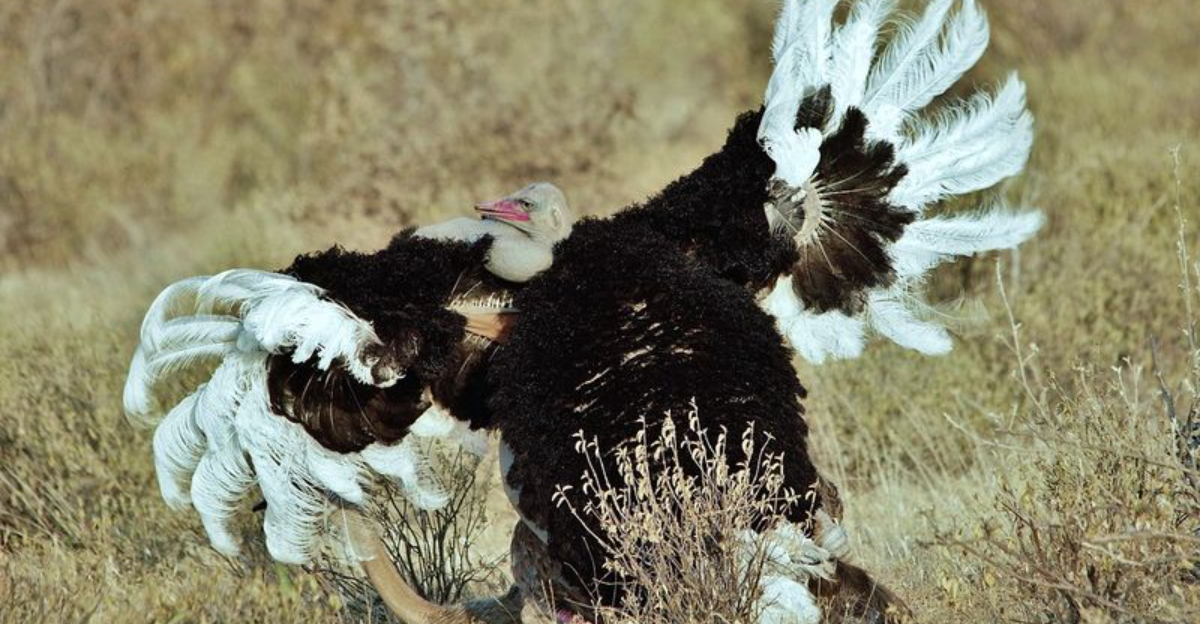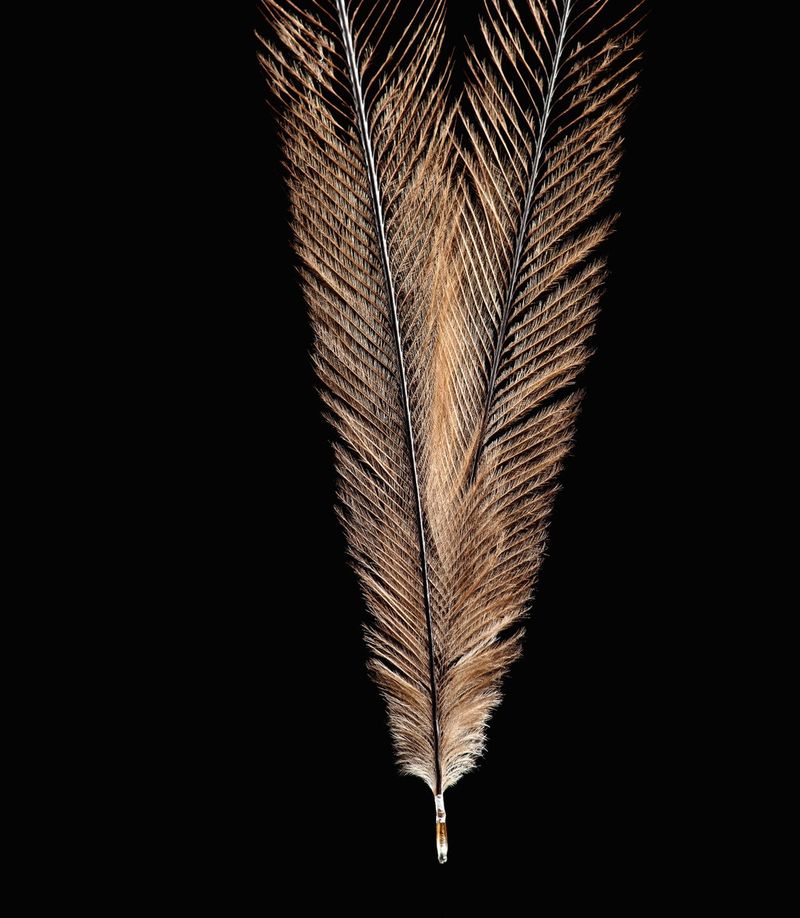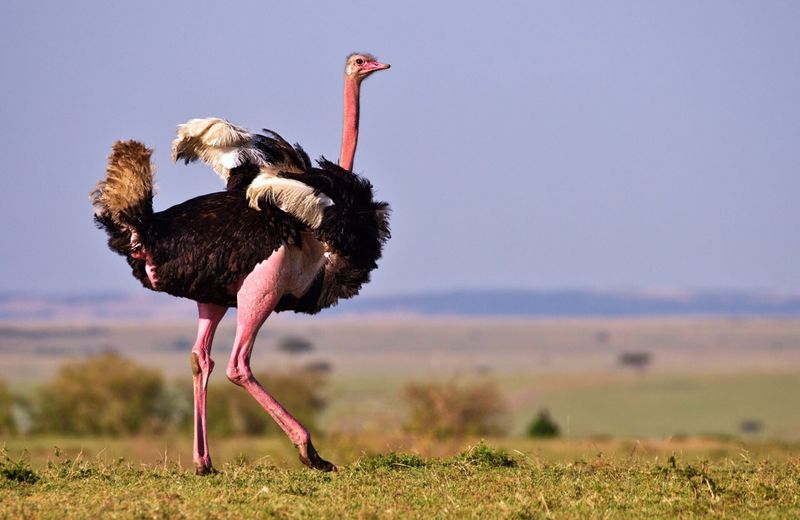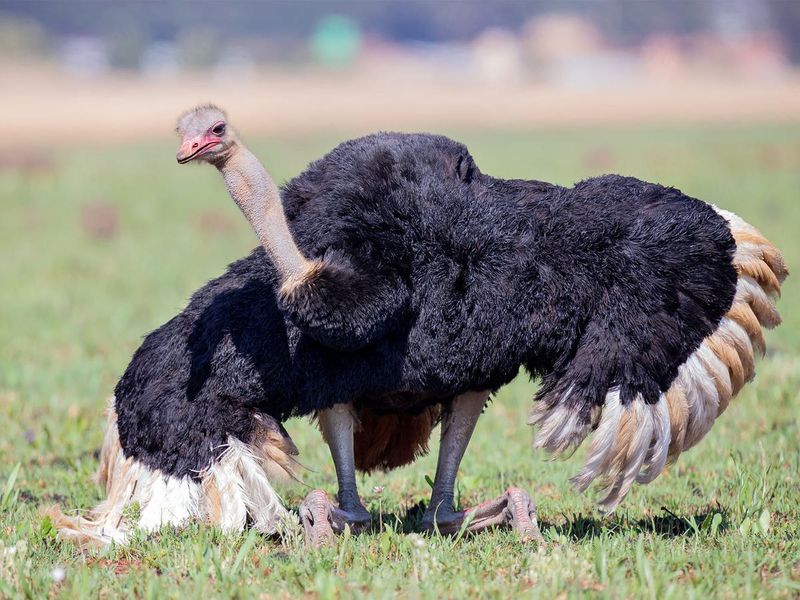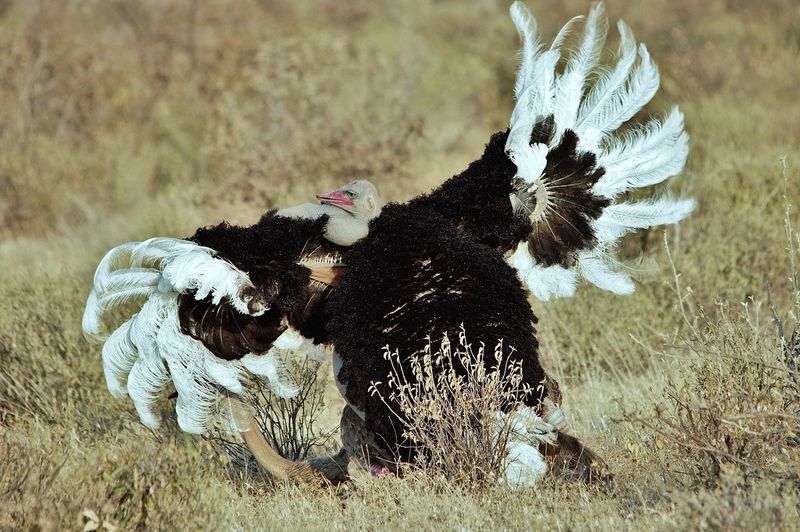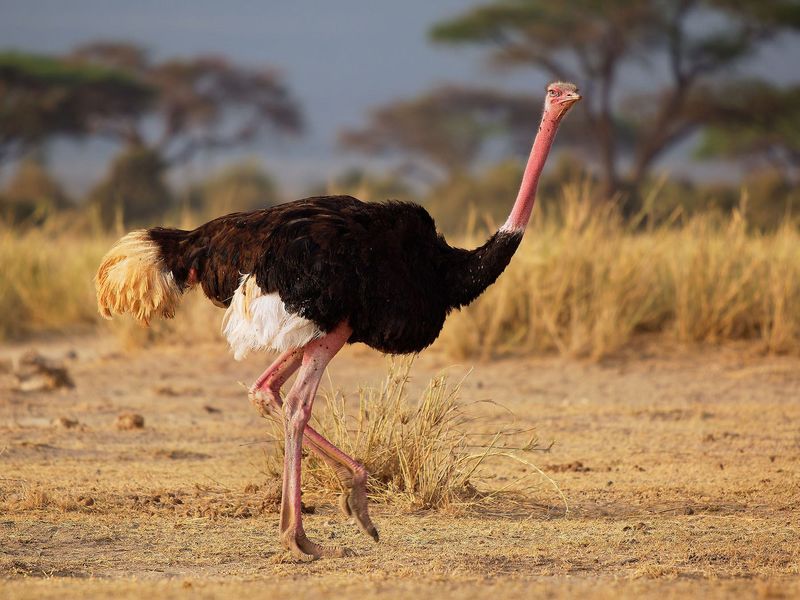Ostriches, the world’s largest birds, might not fly but they sure know how to flirt! During breeding season, these giant birds put on amazing shows using their special feathers to attract mates. Male ostriches have evolved unique feather structures that create unforgettable courtship displays. Let’s explore how these magnificent birds use their fluffy plumage to win the hearts of female ostriches and outshine their rivals.
Fluffy Feather Structure Creates Dynamic Displays
Unlike most birds with stiff, interlocked feathers, ostriches sport soft, billowy plumes that lack tiny hooks called barbicels. This unique adaptation gives their feathers that signature shaggy, flowing appearance you can’t miss!
When a male ostrich starts his courtship dance, these special feathers catch even the slightest breeze, creating dramatic movements that female ostriches find irresistible. The absence of barbicels allows for greater flexibility, so each feather can flutter independently.
Male ostriches take full advantage of this fluffy structure during displays. Their feathers create a hypnotic visual effect as they ripple and wave, almost like watching tall grass in a gentle wind. This distinctive feather structure evolved specifically to maximize visual impact during courtship, proving that sometimes being a bit disheveled is actually part of nature’s perfect plan!
Wing-Flapping Spectacles Showcase Size and Strength
When romance is in the air, male ostriches transform into feathered showmen! They spread their enormous wings wide open, creating an impressive display that can span over six feet across. This dramatic wing-flapping becomes the centerpiece of their courtship performance.
The contrast between their stark black body feathers and brilliant white wing plumes creates a striking visual effect that’s impossible to ignore. As they rapidly flap these massive wings, males create a thunderous sound that travels across the savanna, announcing their presence to females far and wide.
This spectacular wing display serves two important purposes: it demonstrates the male’s physical fitness (weak males can’t maintain such energetic displays) and advertises his impressive size. Female ostriches typically choose mates with the most vigorous wing displays, as this energy suggests the male will father strong offspring and defend the nest effectively.
Tail Feather Fans Signal Readiness to Mate
The tail feathers of a male ostrich might seem unremarkable at first glance, but during courtship, they become powerful communication tools. Males raise their tail feathers into an impressive fan shape that stands nearly vertical above their backs, creating a dramatic silhouette visible from great distances.
This tail display isn’t just for show—it’s a clear signal of the male’s breeding condition and readiness to mate. The fuller and more symmetrical the tail fan appears, the healthier the male ostrich is likely to be. Female ostriches pay close attention to these details!
Males will often alternate between rapid tail feather quivering and holding the fan perfectly still, creating a mesmerizing visual rhythm. This specialized tail movement has evolved over thousands of years to trigger mating interest in females. When combined with their other displays, a perfect tail fan can make the difference between reproductive success and failure.
Rhythmic Dancing Showcases Feathered Finery
Male ostriches are nature’s dance champions! Their courtship routine includes an elaborate dance where they swing their necks in figure-eight patterns while their feathers create a hypnotic visual rhythm. This dance transforms their entire body into a moving canvas of fluttering plumage.
The dance typically begins with slow, deliberate movements that gradually build in intensity. As the male becomes more excited, he drops to his knees and rocks his body from side to side, causing his feathers to sway dramatically. His wing tips brush against the ground, kicking up dust that catches the sunlight and adds drama to the performance.
Female ostriches gather around to watch these displays, comparing the quality and energy of different males’ dances. The most coordinated dancers with the most impressive feather movements usually win the mating rights. This dance has evolved over millions of years to perfectly showcase every spectacular feather on the male’s body!
Color-Changing Neck Feathers Signal Dominance
Here’s something truly remarkable about male ostriches: during breeding season, the feathers around their necks can actually change color! The skin beneath these specialized neck feathers flushes with blood when the male is excited, causing the feathers to take on a reddish hue that signals his dominance and breeding readiness.
This color-changing ability serves as a real-time mood indicator that female ostriches can read at a glance. The more vibrant the color display, the more testosterone the male is producing—a clear sign of his vigor and competitive edge over rival males.
When multiple males compete for females’ attention, these neck feathers become battlefields of color. Males with the most intense color changes typically win these visual showdowns without physical fighting, saving their energy for mating. This fascinating adaptation demonstrates how ostrich feathers don’t just move impressively—they communicate complex messages through color shifts that help determine who wins and who loses in the game of love.
